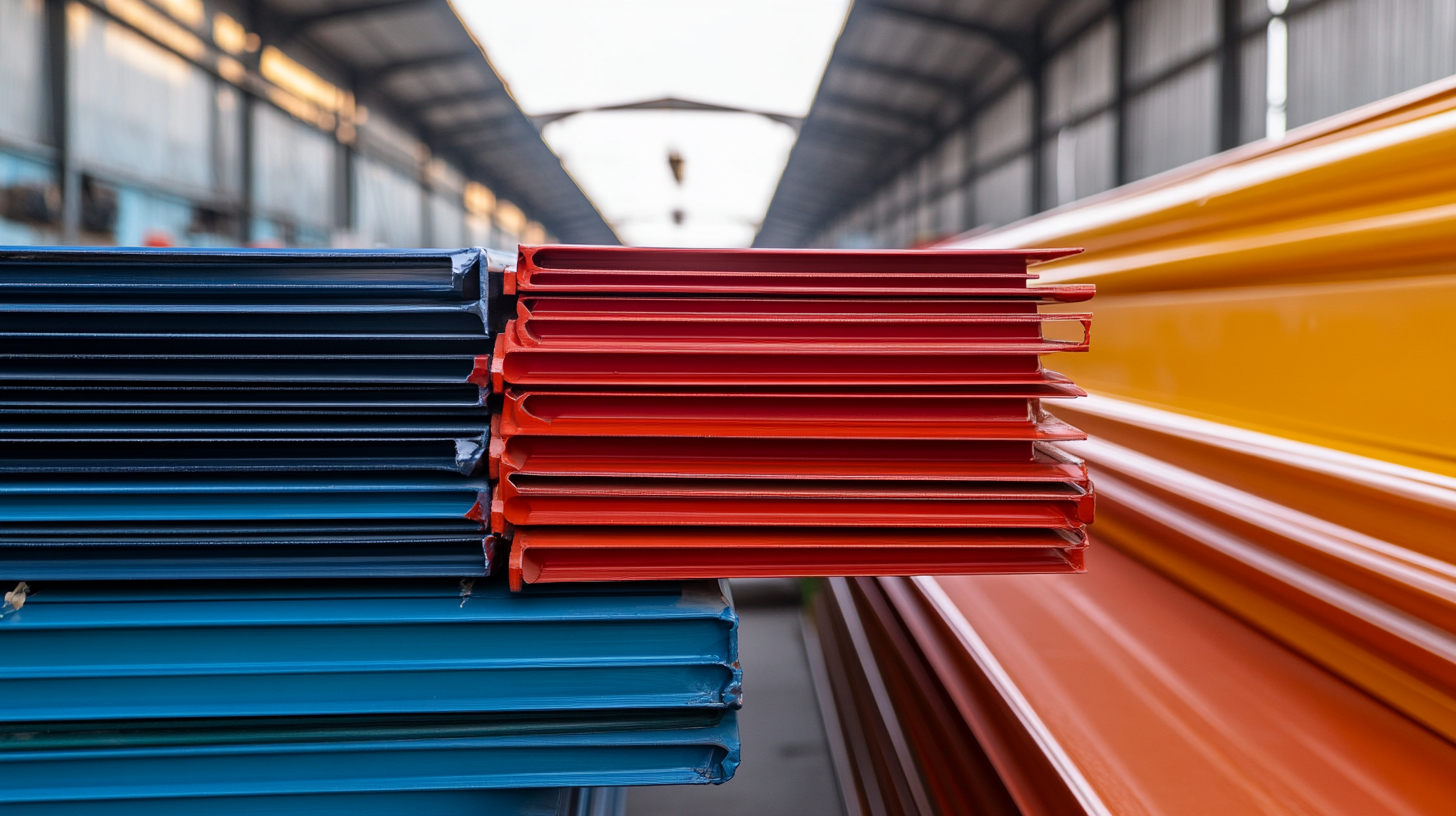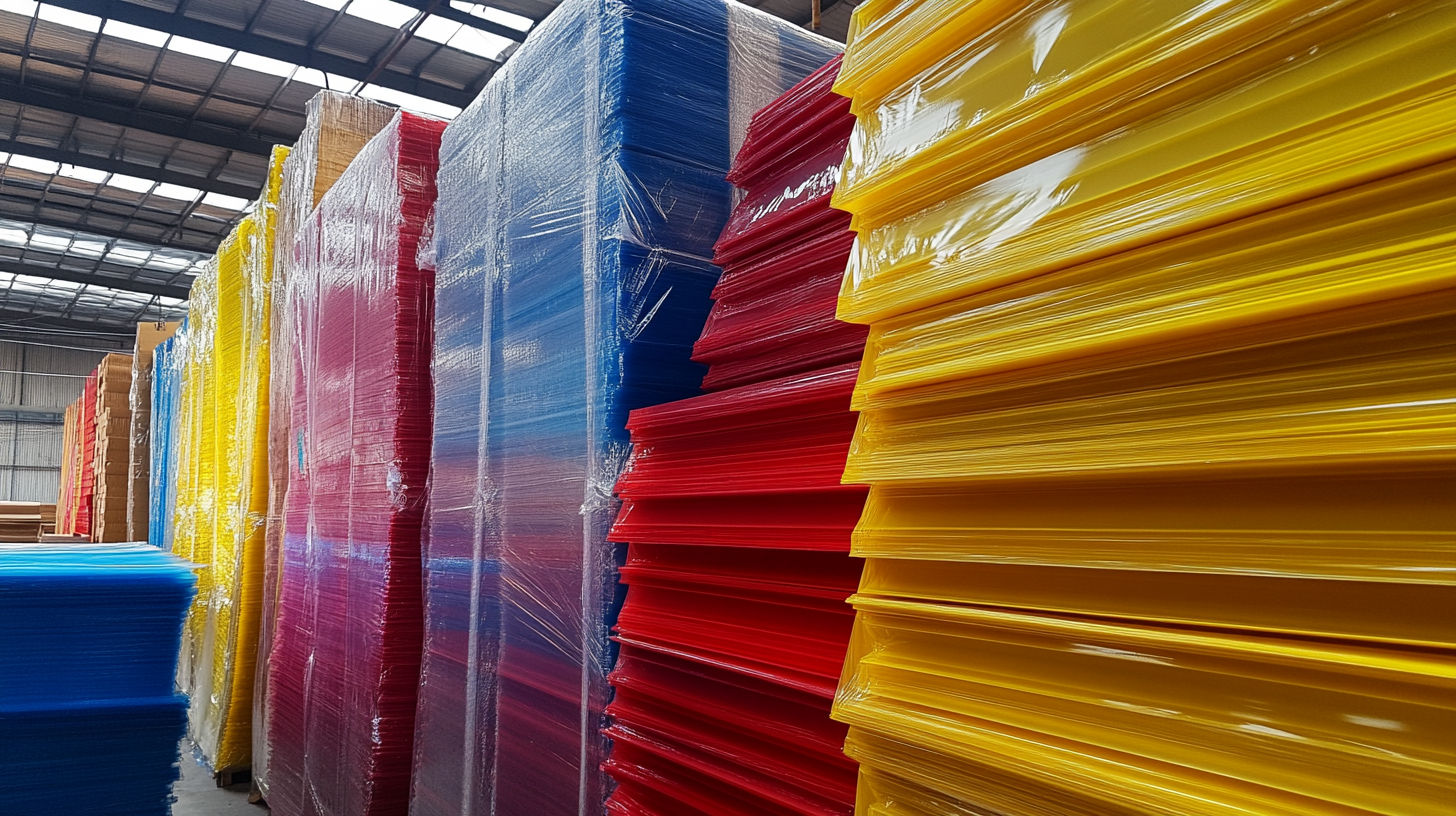Inquiry
Form loading...
- Phone
- E-mail
The global demand for high-density polyethylene (HDPE) sheets continues to rise, driven by their exceptional durability, chemical resistance, and versatility across various applications ranging from packaging to construction. According to a recent industry report by Markets and Markets, the HDPE market is projected to reach USD 75 billion by 2025, with an annual growth rate of over 5%. Prominently, China stands out as a leading exporter of HDPE sheets, leveraging advanced manufacturing technologies and economies of scale to deliver unmatched quality. This strong export capability not only enhances China's position in the global market but also meets the growing needs of industries worldwide seeking reliable and high-performance materials. As we delve deeper into the unmatched quality and export strength of the best HDPE sheets from China, we will explore how these factors contribute to shaping the future of sustainable packaging and construction solutions.

When it comes to exporting HDPE sheets from China, unparalleled after-sales support plays a crucial role in enhancing customer satisfaction. Companies that prioritize customer service ensure that their clients feel valued and secure throughout the purchasing process. This commitment not only strengthens relationships but also encourages repeat business. Offering robust after-sales support, including timely delivery updates and effective resolution of issues, solidifies the reputation of exporters in a competitive market.

Tip: When choosing an exporter for HDPE sheets, verify their after-sales support policies. Look for testimonials from previous customers to gauge the effectiveness of their service. This can provide insights into how well the company responds to inquiries and resolves problems post-purchase.
Furthermore, strong communication is key to maintaining customer satisfaction. Exporters should establish clear channels for customers to voice concerns or inquiries. Regular follow-ups after the sale can help identify potential issues early and demonstrate a commitment to customer care.
Tip: Stay informed about your order status through frequent communication with your supplier. Establishing a good rapport will facilitate better service and quicker resolutions, enhancing your overall experience with the exporter.
When considering the total cost of ownership for HDPE sheets, one must look beyond the purchase price and evaluate the long-term savings from repairs and maintenance. HDPE sheets are not only known for their unmatched quality but also for their durability, which translates to fewer replacements over time. This resilience helps in minimizing downtime in various applications, thereby optimizing operational efficiency.
**Tips:** Regular inspections of HDPE sheets can prevent minor issues from escalating into costly repairs. Additionally, employing protective coatings can extend the life of the sheets, further enhancing cost efficiency. Evaluate the environmental conditions where the sheets will be used, as specific treatments may be beneficial for prolonged performance.
The cost efficiency of HDPE sheets also comes from their resistance to chemicals and UV radiation, making them suitable for a variety of industries. Choosing the right thickness and customization options can yield significant savings in both material and repair costs. **Tips:** Always compare suppliers to find the best value for high-quality HDPE, and consider bulk purchasing to further decrease unit costs.

The future of HDPE sheets is poised for significant transformation, driven by innovative manufacturing processes and increasing demand across various industries. As awareness of sustainable materials grows, manufacturers in China are at the forefront of producing high-density polyethylene sheets that meet both quality and environmental standards. This transition is not only enhancing product performance but also aligning with global sustainability goals, making HDPE sheets a preferred choice for industries ranging from construction to packaging.
Moreover, the impact of these advancements on global markets cannot be understated. With China emerging as a leader in the HDPE sheet sector, the export strength of these products is fostering competitive pricing and improved availability worldwide. This trend is invigorating international trade relationships and encouraging other regions to invest in similar manufacturing capabilities. As a result, the HDPE sheet market is likely to see an expansion in applications, particularly in emerging economies where infrastructure development is on the rise, ultimately reshaping the global landscape of polymer products.
| Region | 2022 Export Volume (Metric Tons) | Market Growth Rate (2022-2027) | Main Usage Applications | Average Price per Ton (USD) |
|---|---|---|---|---|
| North America | 150,000 | 4.5% | Packaging, Construction | 1,200 |
| Europe | 120,000 | 3.8% | Automotive, Agriculture | 1,250 |
| Asia-Pacific | 200,000 | 5.0% | Construction, Electrical | 1,100 |
| Latin America | 80,000 | 2.5% | Pipes, Packaging | 1,150 |
| Middle East & Africa | 60,000 | 3.0% | Construction, Electrical | 1,300 |
High-density polyethylene (HDPE) sheets manufactured in China are rapidly gaining a reputation for unmatched quality and performance in various applications. According to a report by the Global HDPE Market Research, demand for HDPE sheets is projected to grow at a CAGR of 4.6% over the next five years, largely driven by advancements in manufacturing techniques and stringent quality control measures employed by Chinese manufacturers. These entities leverage cutting-edge technology to produce HDPE sheets that not only meet but exceed international standards, including ASTM and ISO certifications, ensuring their reliability and durability.
One of the key performance metrics that sets high-quality HDPE sheets from China apart from competitors is their tensile strength and density. Industry studies indicate that premium HDPE sheets can achieve tensile strengths up to 3,000 psi, significantly outperforming lower-quality alternatives which typically range around 2,000 psi. Additionally, the superior chemical resistance of these sheets makes them ideal for use in harsh environments, with reports showing a 30% higher resistance to corrosive substances compared to lower-grade HDPE products. This combination of strength, durability, and resistance is why many industries are opting for HDPE sheets produced in China, further solidifying the country's position as a leader in the global market.
The HDPE sheet industry is making significant strides toward sustainability, reflecting a global shift in manufacturing practices. Eco-friendly approaches in production are crucial as they not only minimize environmental impact but also enhance the quality of the final product. By focusing on the use of recycled materials and implementing energy-efficient technologies, manufacturers are setting new standards in the HDPE sheet market. This not only reduces waste but also showcases a commitment to sustainable development, making the products not just high in quality but also environmentally responsible.
Tip: When selecting HDPE sheets for your projects, look for certifications that indicate sustainable sourcing and production methods. These certifications can give you confidence in the environmental integrity of your materials.
Moreover, many companies are investing in innovative processes to ensure that their operations are less harmful to the planet. This includes reducing water consumption and minimizing emissions during production. As consumers become more environmentally aware, the demand for HDPE sheets produced through sustainable practices continues to rise. This is not only beneficial for the planet but also enhances the brand reputation of companies committed to eco-friendly practices.
Tip: To further support sustainability, consider reusing HDPE sheets when possible or choosing products that are designed for durability and longevity. This approach can significantly cut down on waste and promote a circular economy.
